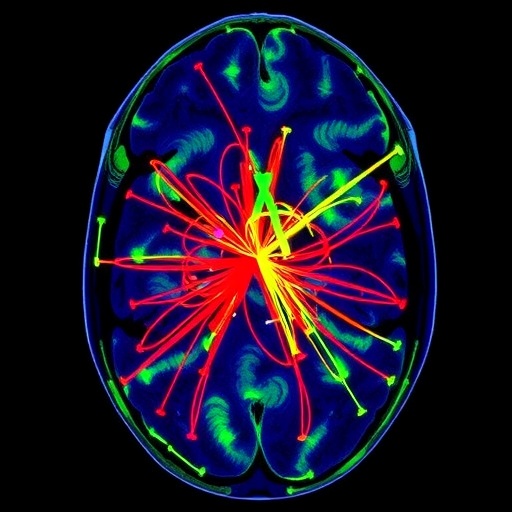In an era where advanced imaging technologies are becoming increasingly pivotal in understanding complex biological systems, a new study emerges that delves into the intricacies of harmonizing diffusion tensor magnetic resonance imaging (DTI) data. This research, conducted by Fitzgerald and Talavage, scrutinizes the efficacy of ComBat—a robust statistical method designed to harmonize data stemming from various sources and conditions in a comprehensive approach. The findings articulated in their publication in the Annals of Biomedical Engineering set the stage for transcending traditional boundaries of biomedical imaging and data analysis.
At the core of the study is the challenge posed by inherent variability in imaging data. The significance of standardizing such data cannot be overstated, particularly in the context of DTI, which is crucial for delineating microstructural differences in brain tissues. Variations due to scanner differences, subject motion, and other extrinsic factors can confound results and hinder accurate comparisons across studies. In this study, Fitzgerald and Talavage focus on the transferability of the ComBat method to effectively address these challenges, striving for a more integrated and aligned dataset that can yield reliable insights.
ComBat operates by leveraging empirical Bayes’ methods to remove batch effects from high-dimensional data. This approach is particularly beneficial for DTI, where multiple factors across various research sites can produce significant variances in results. By systematically addressing these inconsistencies, the authors aim to enhance the interpretability of DTI data and, consequently, the insights it affords into neuroanatomical and neurological changes. The utilization of ComBat in this context showcases not just the method’s versatility but also its potential to bolster scientific collaboration across geographical and institutional limits.
As Fitzgerald and Talavage present their findings, they discuss the methodology in detail, outlining the steps taken to preserve the integrity of the data while eliminating systematic biases. They highlight how a comprehensive evaluation of the ComBat method enables researchers to forge connections among disparate studies, creating a unified pool of knowledge that can drive forward the field of neuroscience. This interconnectedness is critical as it transforms individual studies into a collective understanding of brain pathology and development.
In their comparative analysis, the researchers meticulously detail how the harmonization process influences the final analyses of diffusion metrics. By illustrating the significant differences pre- and post-ComBat application, the authors provide compelling evidence that challenges the conventional wisdom about the variability of DTI data. This discourse is particularly relevant for researchers aiming to draw conclusions from multi-center studies, where variations can skew perceptions of clinical implications.
Another envisaged outcome of this research is the potential for enhanced diagnostic capabilities. By utilizing standardized data, clinicians and researchers could achieve a more nuanced understanding of various neurological conditions, from Alzheimer’s disease to traumatic brain injuries. The implications for patient care are profound; with more accurate data, tailored interventions can be designed that better meet the specific needs of patients, ultimately leading to improved outcomes and quality of life.
Moreover, Fitzgerald and Talavage’s work underlines the importance of transparency and reproducibility in neurological research. By providing a clear pathway to harmonizing data, they advocate for the necessity of employing standardized methodologies across studies, fostering trust in findings and reinforcing collaborative efforts among scientists. This approach is fundamental as it paves the way for future investigations into the brain’s complexities.
The research also calls attention to the role of technology and innovation in driving discoveries within the field. As imaging techniques advance, so too must the analytical methods utilized to interpret the resulting data. The evolution of ComBat from its original formulation highlights the dynamic nature of biomedical engineering and the necessity of continual adaptation in methodologies to meet emerging challenges.
Fitzgerald and Talavage encourage the scientific community to embrace robust statistical tools to enhance data integrity and reliability. They argue that, as collaborations increase, necessitating the amalgamation of diverse datasets, the harmonization of data will become not just a desirable goal but a critical imperative. This study thus serves as a clarion call for researchers to prioritize standardized practices to enhance the overall quality of neuroscience research.
In conclusion, the publication by Fitzgerald and Talavage is a substantial contribution to the field of medical imaging and data harmonization. Their exploration of ComBat’s applications within DTI underlines a transformative approach to understanding and interpreting complex imaging data. As the barriers between research centers dissolve and data sharing becomes the norm, studies like this will serve as foundational texts guiding researchers towards a more unified understanding of neuroscience.
The future of DTI and its application in clinical settings is undoubtedly promising. With ongoing advancements in imaging technologies and statistical methodologies such as ComBat, the medical community is poised to gain an unprecedented understanding of brain architecture and function. The implications for translational research and practical applications in clinical neuroscience are staggering, heralding a new era of precision medicine driven by high-quality, harmonized data.
By spearheading this line of inquiry, Fitzgerald and Talavage remind us that the very foundation of scientific discovery is built upon the reliability and interpretation of data. As we continue to push the boundaries of knowledge in the biomedicine sphere, the pressing need for innovative solutions in data analysis remains clearer than ever.
Ultimately, the research presented in Ann Biomed Eng is not merely about harmonizing images; it is about harmonizing the scientific community’s understanding of the brain—bridging gaps, fostering collaboration, and advancing our collective quest for knowledge.
Subject of Research: Transferability of ComBat Harmonization of Diffusion Tensor Magnetic Resonance Imaging Data
Article Title: Evaluating Transferability of ComBat Harmonization of Diffusion Tensor Magnetic Resonance Imaging Data
Article References:
Fitzgerald, B., Talavage, T.M. Evaluating Transferability of ComBat Harmonization of Diffusion Tensor Magnetic Resonance Imaging Data.
Ann Biomed Eng (2025). https://doi.org/10.1007/s10439-025-03886-w
Image Credits: AI Generated
DOI: https://doi.org/10.1007/s10439-025-03886-w
Keywords: Diffusion Tensor Imaging, ComBat, Data Harmonization, Neuroscience, Medical Imaging, Biomedical Engineering, Imaging Standardization, Batch Effects.
Tags: batch effects removal in DTIbiomedical imaging advancementsbrain tissue microstructural analysisComBat statistical methoddata analysis in biomedical researchdiffusion tensor imaging challengesempirical Bayes methods in imagingenhancing imaging data reliabilityFitzgerald and Talavage study findingsharmonizing DTI datastandardizing imaging datavariability in diffusion tensor imaging





